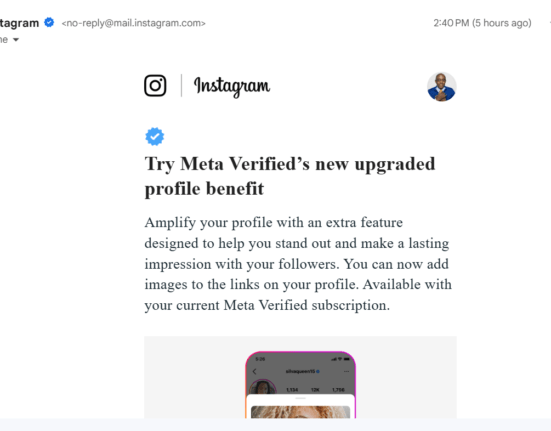Are you keeping an eye on the right indicators of customer loyalty? Knowing what keeps customers coming back, like repeat purchases and frequent visits, is vital. These signs show how much they trust and enjoy your brand. This guide will help you spot and boost these key elements, ensuring your customers stay engaged and loyal. Let’s dive into what makes your customers stick around, and how you can keep that loyalty strong.
Here are the key indicators of customer loyalty you cannot ignore.
1. Repeat Purchases
One of the primary indicators of customer loyalty is repeat purchases. When customers consistently choose the same brand for their needs over competitors, it demonstrates trust and satisfaction with the product or service. This behavior often results from positive experiences and perceived value, making customers likely to return. Businesses can track purchase patterns through sales data to identify loyal customers and understand buying behaviors. Recognizing and rewarding repeat purchases can further enhance loyalty, encouraging customers to continue choosing the brand. By focusing on strategies that drive repeat purchases, companies can effectively increase their loyal customer base, leading to sustained business growth.
2. Customer Lifetime Value (CLV)
High Customer Lifetime Value (CLV) is a crucial indicator of customer loyalty. It measures the total revenue a business can expect from a single customer throughout their relationship. A high CLV suggests that the customer not only purchases repeatedly but also maintains a relationship with the brand over time. Businesses that monitor CLV gain insights into the effectiveness of their customer retention strategies. Enhancing service quality, offering personalized experiences, and maintaining regular communication are strategies that help increase CLV. These practices ensure customers feel valued and more inclined to remain loyal. By focusing on increasing CLV, businesses can invest in long-term relationships that yield significant returns.
3. Positive Feedback
Positive feedback, including favorable reviews and testimonials, serves as a strong indicator of customer loyalty. When customers are willing to publicly share their positive experiences, it not only reflects their satisfaction but also enhances the brand’s reputation. This advocacy supports the business in attracting new customers while reinforcing the loyalty of existing ones. Companies should encourage satisfied customers to leave reviews and make it easy for them to share their experiences on various platforms. Responding to feedback, whether positive or negative, shows that a business values its customers’ opinions, further strengthening customer relationships. Regularly collecting and acting on customer feedback is essential for maintaining high levels of customer satisfaction and loyalty.
4. Referrals
Referrals are a powerful indicator of customer loyalty. When existing customers recommend a brand to friends and family, it demonstrates trust and satisfaction with the company’s products or services. This word-of-mouth marketing is highly effective and cost-efficient, as it comes from credible, unpaid sources. Businesses can encourage referrals by providing exceptional customer service and offering incentives through referral programs. These programs can reward both the referrer and the new customer, thereby promoting further engagement and loyalty. Tracking referrals helps businesses understand their impact on growth and customer loyalty. By leveraging referrals, companies can expand their customer base organically and strengthen the loyalty of their existing customers.
Also Read: A Good Referral Strategy Can Supercharge Your Sales
5. Engagement
Customer engagement is another key indicator of customer loyalty. Engaged customers interact with the brand through various channels, such as social media, email newsletters, or loyalty programs. High levels of engagement suggest that customers feel a connection to the brand and are interested in maintaining a relationship. Businesses can foster engagement by creating compelling content, offering exclusive deals, and providing interactive platforms where customers can express their opinions and preferences. Regularly analyzing engagement metrics helps companies adjust their strategies to better meet customer needs. Enhanced engagement strategies ensure customers remain interested and connected with the brand, reinforcing their loyalty. As one of the reliable indicators of customer loyalty, engagement requires continuous effort and innovation to keep customers involved and satisfied.
6. Reduced Sensitivity to Price
Reduced sensitivity to price is a significant indicator of customer loyalty. Loyal customers often place higher value on the brand experience and quality than on price alone. This loyalty can shield a business from competitive price pressures and enable pricing strategies that support higher margins. To cultivate this type of loyalty, companies need to consistently deliver exceptional value that justifies higher prices. Strategies like adding unique features, improving service quality, or offering personalized experiences can enhance perceived value. Monitoring customer reactions to price changes can also provide insights into their loyalty levels. By focusing on value over price, businesses can maintain a loyal customer base that prioritizes quality and is less driven by cost considerations.
7. Frequent Visits
Frequent visits to a store or website are strong indicators of customer loyalty. Regular visits suggest that customers are continually interested in the brand’s offerings and likely to make purchases. Tracking the frequency of visits through analytics tools helps businesses identify their most loyal customers and understand their behavior patterns. Companies can encourage more frequent visits by offering exclusive content, regular updates, or special promotions that draw customers back. Personalizing the customer experience during these visits also increases satisfaction and loyalty, making customers more likely to return. By valuing and analyzing the frequency of customer visits, businesses can effectively tailor their offerings to meet customer needs and enhance loyalty.
8. Higher Transaction Values
Higher transaction values are often indicative of customer loyalty, as loyal customers tend to spend more per purchase than new or casual buyers. This pattern can result from customers’ trust in the brand and their willingness to invest in higher-priced or premium products. To encourage higher spending,
businesses can offer loyalty programs that reward customers based on spending levels, enhancing the value provided to high spenders. Analyzing sales data to identify trends in customer spending helps refine marketing and sales strategies to target loyal customers effectively. By recognizing and rewarding higher transaction values, companies reinforce the loyalty of their most valuable customers, ensuring continued business growth and profitability.
9. Customer Feedback
Active customer feedback is a vital indicator of customer loyalty. Loyal customers often provide feedback because they care about the brand’s success and want to see continuous improvement. This feedback can range from product improvement suggestions to enhancements in customer service. Encouraging a culture where feedback is valued and sought can strengthen customer relationships and loyalty. Implementing changes based on customer suggestions demonstrates a company’s commitment to meeting their needs and expectations. Regularly inviting feedback through surveys, comment boxes, or social media can keep the communication channels open. By actively listening and responding to customer feedback, businesses can make meaningful improvements that reinforce customer loyalty and trust.
Now You Know the Indicators of Customer Loyalty
By closely monitoring these indicators of customer loyalty, businesses can better understand their customers’ commitment and satisfaction. Effective strategies that cater to these indicators enhance loyalty and drive sustainable growth. Whether through frequent visits, high transaction values, or active engagement, each indicator provides valuable insights. Recognizing and acting on these signs ensures customers feel valued and remain loyal, contributing to the long-term success of the business.
Additional Resources:







